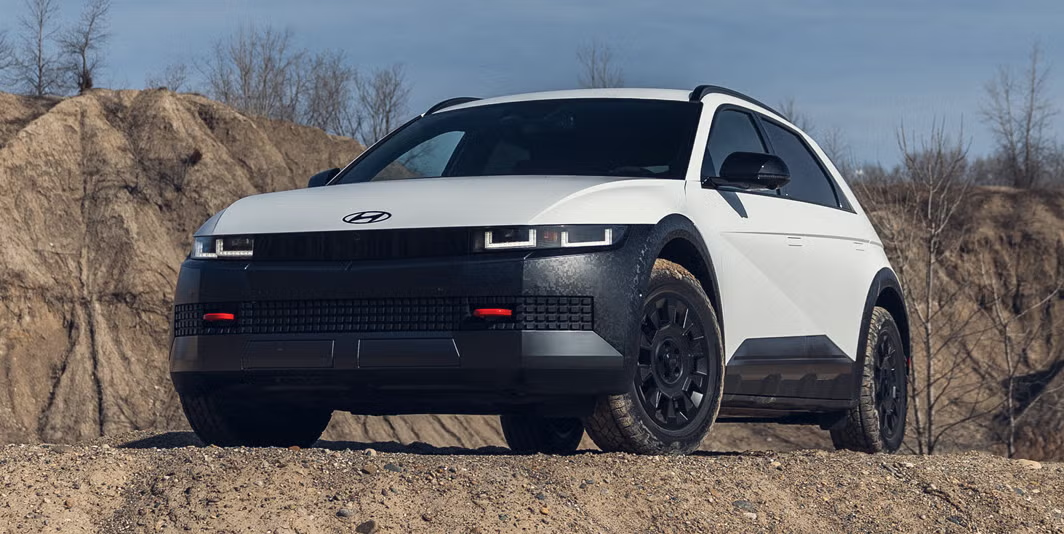In previous years, well-known Tesla models such as the Model 3 and Model Y performed exceptionally well in safety evaluations conducted by the Insurance Institute for Highway Safety (IIHS), even achieving the prestigious Top Safety Pick+ designation.
However, for 2025, no Tesla appears among IIHS’ list of safest electric vehicles unlike the models featured here. To Tesla’s credit, both the 2025 Model Y and the Cybertruck received a five-star overall safety rating, the highest score awarded.
EVs With Well-Calibrated Driving
Nevertheless, this overview highlights electric vehicles that have been recognized with either the 2025 Top Safety Pick+ or the 2025 Top Safety Pick by the IIHS and incorporates data from the National Highway Traffic Safety Administration (NHTSA) when available.
These represent the most secure all-electric vehicles currently available.
2025 Ford Mustang Mach-E
Ford’s polarizing electric crossover has earned IIHS Top Safety Pick+ honors for 2025, in addition to receiving a five-star overall safety rating from the NHTSA.
The 2025 Mustang Mach-E comes equipped with a suite of standard driver assistance and active safety technologies, including front automatic emergency braking, rear cross-traffic alert, blind-spot monitoring, lane keep assist, adaptive cruise control, and automatic high-beams.
Additionally, the Mach-E offers the option of Ford’s BlueCruise 1.5 system, which enables hands-free driving on a network of premapped highways throughout the United States and Canada.
While most electric vehicles are known for their quick acceleration, the Mustang Mach-E adds an element of driving enjoyment as well.
The rear-wheel-drive version isn’t especially powerful but offers solid handling, while the dual-motor GT variant delivers enough performance to be a sporty everyday SUV.
The new Rally trim brings an extra level of fun when taken off-road. Although the Mach-E’s range and charging capabilities are not best-in-class, Ford’s access to Tesla’s Supercharger network is a significant advantage.
With generous cargo space and practical driver assistance features, the Mach-E stands out as a well-rounded and enjoyable electric SUV for daily use even if some purists might argue it isn’t a “real” Mustang.
The Mustang Mach-E brings Ford’s legendary muscle car spirit into the all-electric crossover segment. First introduced in 2021, this compact SUV returns for another year with updates, following the release of the off-road Rally model last year.
As an early contender in the electric compact SUV market, the Mach-E now faces stiff competition from models like the Hyundai Ioniq 5, Toyota bZ4X, and Tesla Model Y. Ford also offers a range of gasoline and hybrid SUVs, with the similarly sized Escape being a notable alternative.
For 2025, the Mach-E receives several updates, including a shift of the shifter from the center console to the steering column. A standard heat pump is now included, along with ventilated front seats and the option of a Sport Appearance package on Premium trims.
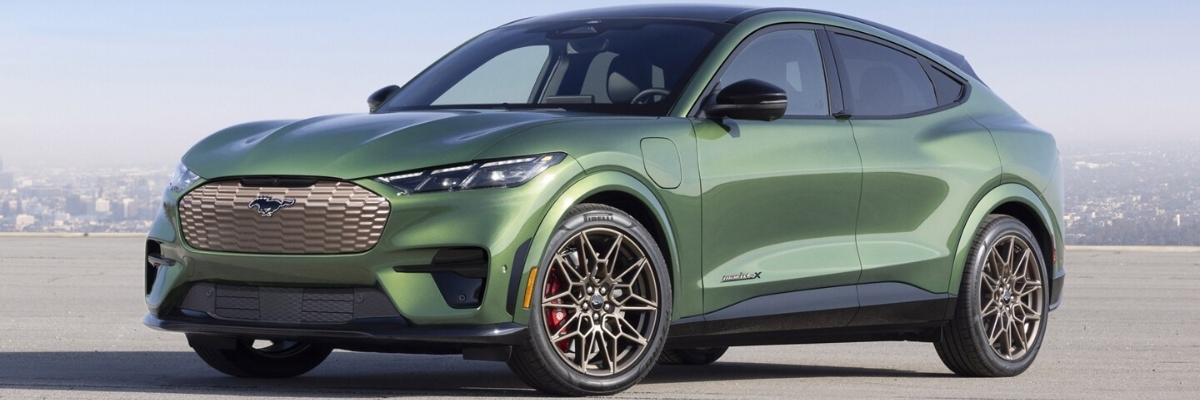
Ford also offers a new Connectivity package that includes a Wi-Fi hotspot, navigation, and access to apps like YouTube. Additionally, BlueCruise 1.5 is now available, accompanied by new subscription plans.
New exterior color options include Molten Magenta Metallic Tinted Clearcoat, Velocity Blue Metallic, and Desert Sand, while the Rally model gets three new wheel designs, including a Dark Carbonized Gray wheel.
The Mustang Mach-E is lauded for its engaging driving dynamics, particularly in the AWD models, which provide excellent cornering capabilities, while the RWD versions are known for their playful oversteer. The car’s reflexes are sharp, although highway driving revealed higher-than-expected wind and road noise.
Performance in the GT model drops after sustained aggressive driving, but the Performance Edition mods make this version a strong contender. While the Mach-E may not qualify as a traditional SUV due to its ground clearance, the Rally model remains an enjoyable off-road option.
Its range is typical for the class, but its charging speed leaves something to be desired. Nonetheless, the Mach-E offers a generous cargo capacity and front trunk. The interior embraces a minimalist style similar to Tesla, though it could better utilize the available space, and the 15.5-inch touchscreen doesn’t make the most of its size.
The all-glass roof, while sleek, can create uncomfortable heat when exposed to sunlight, requiring increased use of the air conditioning. Despite these drawbacks, the Mach-E remains a solid electric SUV, though competitors like Tesla and Hyundai offer faster charging and greater range.
The Mustang Mach-E offers a range of configurations with either RWD or AWD and standard or extended-range batteries. The Select and Premium models are available in various configurations, with the range varying from 230 miles for AWD models with the standard battery to up to 320 miles for RWD versions with the extended-range battery. The GT and Rally models come with the larger battery and AWD.
The GT offers 280 miles of range, while the Rally achieves 265 miles. Standard-range models can charge at up to 110 kW on compatible fast chargers, while extended-range models can charge at rates up to 150 kW.
A public Level 3 charger will take the battery from 10 to 80 percent in about 38 minutes, while Level 2 charging to 100 percent takes between 12 and 14 hours.
The Mach-E’s output varies from 246 hp in the standard-range RWD model to 480 hp in the GT and Rally models. AWD versions with the standard battery produce 325 hp, while extended-range AWD trims produce 365 hp.
Also Read: Top 10 Vehicles With Storage Bins That Are Great for First Aid Kits
2025 Genesis GV70 Electric
As it did in 2024, the GV70 Electric has earned the Top Safety Pick+ designation for 2025. Also consistent with 2024, it has not yet undergone testing by the NHTSA.
The electric variant of Genesis’ outstanding compact luxury crossover comes standard with automatic emergency braking, adaptive cruise control, blind-spot monitoring, rear cross-traffic alert, road sign recognition, and automatic high-beams.
Higher-end trims also include emergency evasive steering assist for added safety.
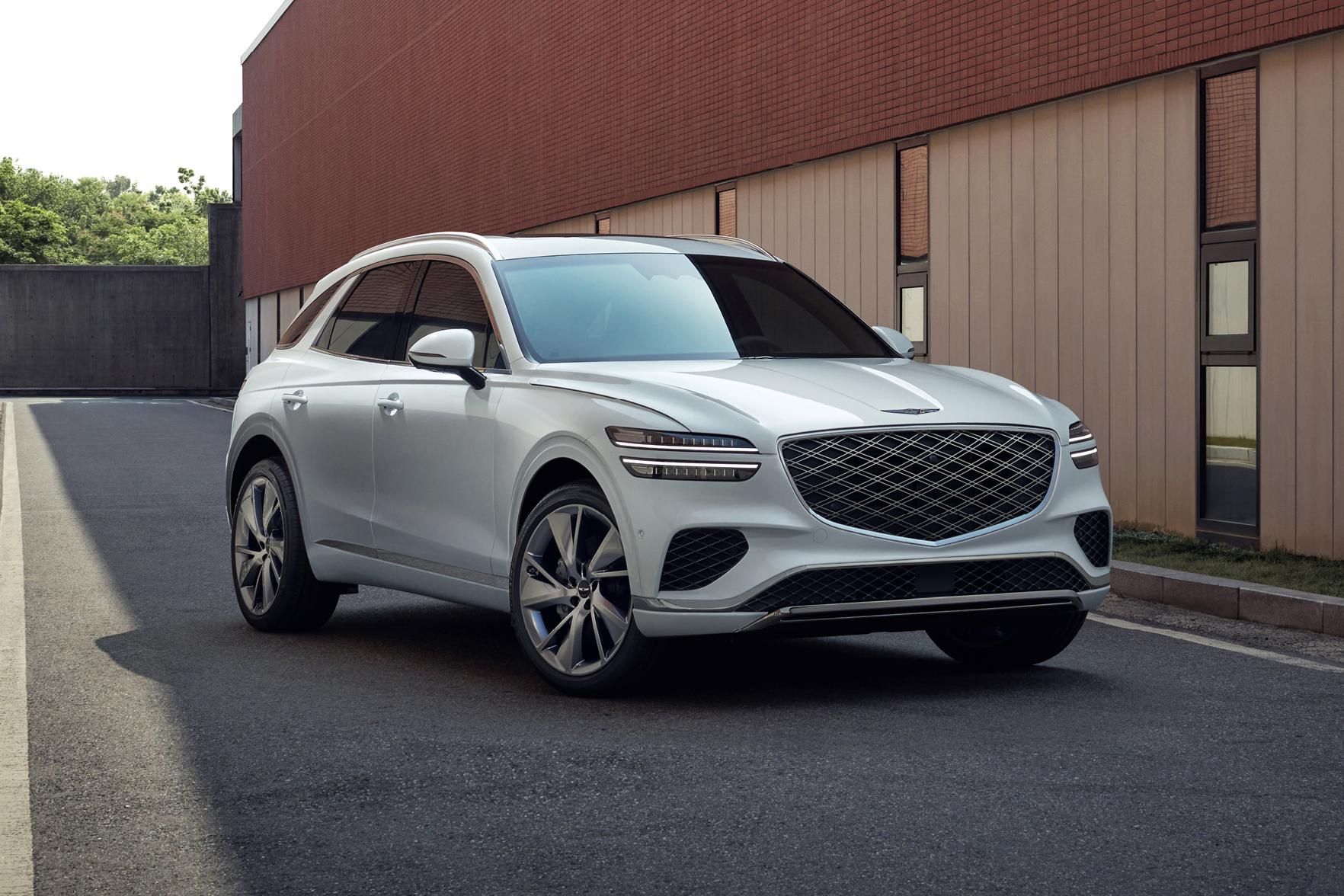
The Genesis GV70 Electric delivers an exceptional level of luxury and is a pleasure to drive though its limited driving range remains a drawback.
It offers impressive comfort and performance within its approximate 200-mile range per charge, but that range is simply too short for a contemporary electric SUV, especially given its premium price.
On the upside, it supports very fast charging. Other than a brake pedal that can feel slightly grabby, there’s little to criticize about the GV70 Electric’s driving dynamics.
It earns high marks for its brisk acceleration, refined ride quality, and confident handling. While the GV70 Electric excels as a stylish and capable city vehicle, it falls short when it comes to long-distance EV travel.
2025 Hyundai Ioniq 5
For 2025, the Hyundai Ioniq 5 once again achieves Top Safety Pick+ recognition from the IIHS. The NHTSA has conducted partial testing, awarding five-star ratings for side crash and rollover protection; these results do not apply to the sporty Ioniq 5 N model.
The 2025 Ioniq 5 is equipped with a wide range of driver assistance and active safety features, including front automatic emergency braking, rear cross-traffic alert with automatic braking, side cross-traffic alert, blind-spot monitoring, lane keep assist, adaptive cruise control, and automatic high-beams.
Higher-trim versions also include blind-spot view cameras. A notable improvement for 2025 is the addition of steering wheel hands-on detection for the lane keep assist system, replacing the previous torque sensor technology.

What could be considered the best electric SUV has gotten even better for 2025 it’s positioning itself as a strong rival to the Tesla Model Y (which notably doesn’t appear on this list) thanks to its built-in NACS charging port.
This allows it to connect directly to Tesla Supercharger stations. The 2025 Ioniq 5 also benefits from a redesigned center console, enhancing practicality and user experience. With the introduction of the rugged Ioniq 5 XRT and the exhilarating Ioniq 5 N, this award-winning electric crossover continues to be a top-tier option.
For the 2025 model year, Hyundai introduces a major refresh for the Ioniq 5, enhancing its design, battery capabilities, and charging network access, while also expanding the lineup with a rugged XRT version and the high-performance Ioniq 5 N. These changes follow Hyundai’s pattern of aggressive innovation seen in previous N models like the Veloster N, Elantra N, and Kona N.
The exterior of the Ioniq 5 has been restyled front and rear, with new wheels and a reworked overall appearance. The newly introduced XRT variant aims to boost off-road capability, while the Ioniq 5 N promises an exhilarating performance experience.
A significant update for 2025 is the inclusion of a North American Charging Standard (NACS) port, giving owners access to Tesla’s expansive Supercharger network without requiring an adapter. Battery capacity has increased across the lineup, and Hyundai has updated the vehicle’s range. Safety improvements include reinforced body panels, doors, and B-pillar sections to enhance side crash protection.
Other physical updates include a rear windshield wiper and washer, along with several new technology upgrades: a more powerful infotainment system featuring standard wireless Apple CarPlay and Android Auto, redesigned HVAC controls, a revised center console with physical heated front seat controls, and a new steering wheel design. The SEL trim and above now include heated rear seats.
Additional improvements include the availability of the Hyundai Digital Key 2 Premium, USB Type-C ports in both front and rear, and a new set of exterior paint options: Atlas White Matte, Ecotronic Gray Matte, and Celadon Gray Matte.
When it debuted for 2022, the Ioniq 5 finally offered a mainstream alternative to the dominant Tesla Model Y. Hyundai crafted an electric vehicle that’s both retro and futuristic, with a spacious cabin full of thoughtful features. Unlike some rivals, the interior avoids excessive minimalism, opting instead for a balance of modern functionality and premium feel.
The Ioniq 5 delivers a refined driving experience with strong acceleration and a good mix of ride comfort and handling. However, some surfaces can make the ride feel a bit stiff, and it remains to be seen whether the 2025 updates will smooth that out.
Across long-term testing and daily use, Hyundai has proven itself a serious contender in the EV market. And with the introduction of the Ioniq 5 N, it’s poised to become a top name in the electric performance car space.
As for range, the Ioniq 5 shows notable improvements for 2025. Hyundai claims the SE Standard Range, equipped with RWD and the smaller battery, should now reach over 240 miles — a 20-mile boost from the prior version.
SE, SEL, and Limited trims with RWD and the larger battery will exceed 310 miles of range, up from 303 miles previously. Dual-motor AWD versions are expected to deliver over 250 to 280 miles, depending on configuration. That said, our real-world experience doesn’t always match EPA estimates.
For example, our year-long test of a 2023 Ioniq 5 never exceeded 220 miles on a single charge, despite its 260-mile EPA rating. Still, the Ioniq 5’s recharge speed remains a standout. The addition of the NACS port essentially doubles the number of accessible fast-charging stations, making road trips easier and more practical.
Battery capacity grows across the board: the Standard Range model now uses a 63.0-kWh pack (up from 58.0), while Long Range variants get an 84.0-kWh unit (up from 77.4). Performance estimates suggest 168 horsepower for the SE Standard Range, 225 horsepower for the long-range RWD, and 320 horsepower for the AWD configuration.
The Ioniq 5 N is much more than just an Ioniq 5 with a power bump — though its 601 horsepower and 569 lb-ft of torque are undeniably impressive. It’s lower and wider than the base model, with performance-tuned aerodynamics and a rear wing incorporating a fresh brake light design.
The interior features aggressively bolstered sport bucket seats mounted lower to improve driving feel and support in hard cornering. Hyundai didn’t just slap on more power either — they strengthened the chassis with extra welding points, adhesive, and reinforced subframes to handle the added force.
On the software side, the Ioniq 5 N introduces features like launch control, battery preconditioning, advanced regenerative braking, drift optimization, and the innovative e-shift, which simulates gear changes and adds drama to acceleration. This car clearly marks the future of Hyundai N performance, and its arrival is as exciting as it is important.
Hyundai also introduces the Ioniq 5 XRT, a trim focused on improving light off-road ability. While it’s not a hardcore trail rig, the XRT still gets unique bumpers, side skirts, black 18-inch wheels with all-terrain tires, and a 0.9-inch suspension lift. A black-out theme dominates the design with black mirror caps, badging, side sills, and window trim. Inside, XRT-specific all-weather floor mats make an appearance.
The XRT is equipped with front tow hooks and delivers a towing capacity of 5,834 pounds. Hyundai increased the approach angle from 17.5 degrees to 19.8 degrees and the departure angle from 25.4 to 30.0 degrees. As expected, this trim is available exclusively with AWD.
Charging remains one of the Ioniq 5’s greatest strengths. Few vehicles in its price class — aside from the Kia EV6 — can match its charging speed. During our extended test of a Limited AWD model, we added 184 miles of range in just 20 minutes using a Level 3 charger.
Technology also gets a boost. A next-gen infotainment system operates through a 12.3-inch center screen. We’re hoping Hyundai has made it more responsive and visually sharper.
Wireless Apple CarPlay and Android Auto are now standard, and drivers will appreciate new physical buttons for core HVAC functions. Over-the-air updates allow Hyundai to push new features and improvements after purchase, keeping the vehicle fresh over time.
2025 Hyundai Ioniq 6
Matching its 2024 performance, the Hyundai Ioniq 6 once again secures the IIHS Top Safety Pick+ award and a five-star overall safety rating from the NHTSA for 2025.
Hyundai equips the Ioniq 6 with a robust suite of standard driver assistance and active safety features, including adaptive cruise control, lane keep assist, blind-spot monitoring, side and rear cross-traffic alert, front automatic emergency braking, and automatic high-beams.
Premium models gain additional features such as blind-spot view cameras, intersection collision avoidance, and automated lane change assistance.
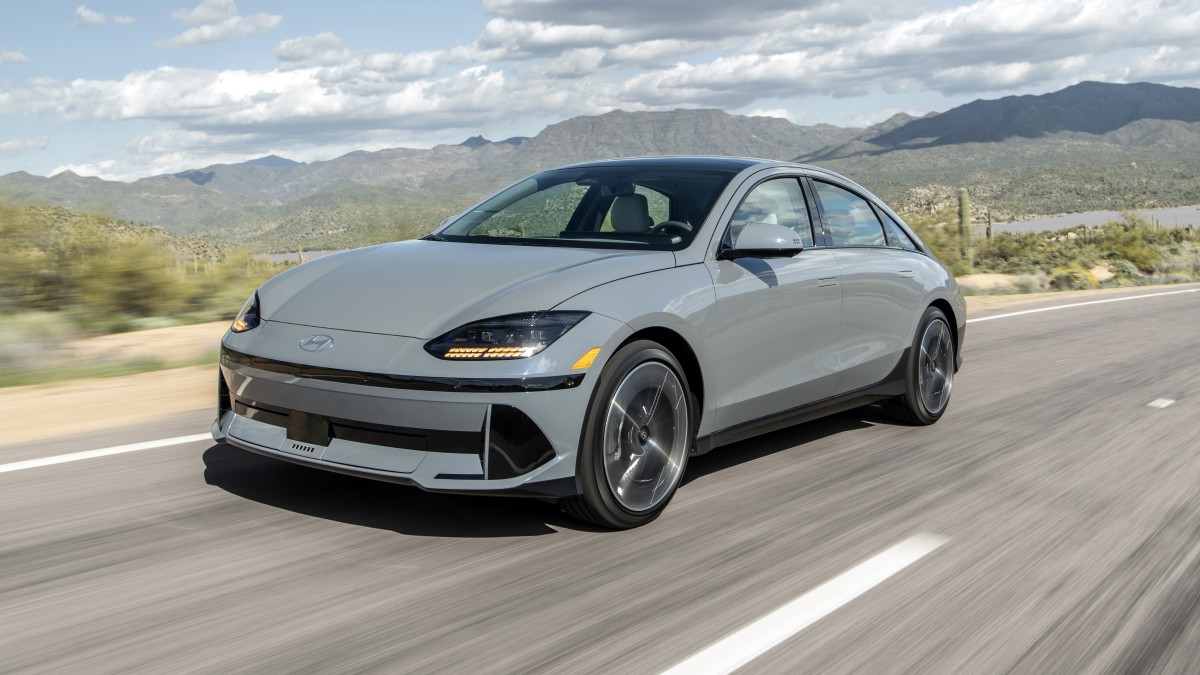
Built on the same underpinnings as the Ioniq 5, the Ioniq 6 benefits from strong driving range and impressive charging performance.
However, this sedan doesn’t match the overall success of its crossover sibling it lacks the same visual appeal, interior spaciousness, and intuitive cabin layout, and uses lower-grade materials.
Despite this, it offers a similarly pleasant driving experience and highly functional safety features. Still, waiting until 2026 might be worthwhile, as the Ioniq 6 is expected to gain both a NACS charging port and a high-performance N variant next year.
Also Read: 5 SUV Dashboards That Never Rattle And 5 That Buzz After 10k Miles
2025 Kia EV9
Kia’s three-row electric SUV prioritizes safety, earning a Top Safety Pick+ designation from the IIHS and a five-star overall safety rating from the NHTSA.
Standard safety and driver assistance features on the 2025 Kia EV9 include front automatic emergency braking, rear cross-traffic alert, emergency evasive steering assist, intersection collision mitigation, blind-spot monitoring, lane keep assist, adaptive cruise control, road sign recognition, and automatic high-beams.
Future enhancements, such as hands-free driving capability, could become available through over-the-air updates.

With its futuristic styling, cutting-edge interior, and engaging driving dynamics, the Kia EV9 makes a compelling case for families considering an electric vehicle.
Although its third-row seating isn’t especially roomy, it’s suitable for children, while the first and second rows offer ample space for adults.
Built on the E-GMP platform shared with the highly regarded Kia EV6, Hyundai Ioniq 5, and Ioniq 6 the EV9 offers commendable range and fast charging performance.
However, it’s best to avoid Tesla Superchargers for now, at least until the EV9 gains a built-in NACS port and the high-performance EV9 GT variant debuts in 2026.
EVs That Feel Unsafe
Electric vehicles are undeniably the future, and both the ownership experience and the manufacturing process are advancing at an extraordinary pace.
What might seem like a cutting-edge feature today could quickly become outdated, highlighting just how fast the EV landscape is shifting.
Amidst all this rapid development, some electric cars have managed to leave a lasting impact, while others have failed to offer any real value. Virtually every automaker has experienced setbacks in the electric vehicle space for a variety of reasons.
Some EVs fall short when it comes to performance, while others simply don’t justify their price tags.
Ultimately, these are electric cars that are best avoided for several reasons chief among them being that there are often better alternatives available for the same cost. With that in mind, here are 10 electric vehicles you should steer clear of at all times.
Chevrolet Bolt EUV
With a starting price of $34,495, the Chevrolet Bolt EUV costs $2,000 more than the standard Bolt EV, yet it surprisingly doesn’t offer much more in return.
It’s powered by a 200-horsepower front-wheel-drive electric motor, and there’s no all-wheel-drive option available. The vehicle is equipped with a 65.0 kWh battery pack, which provides a respectable 247 miles of range on a full charge.

However, this is where the issues begin despite being priced over $30,000, the Bolt EUV lacks distinguishing features or added value.
The only scenario where it makes financial sense is if you qualify for a substantial federal tax credit. Without that, the vehicle doesn’t represent great value.
Additionally, the cargo space is quite limited. Even though the range is competitive, charging takes longer than expected. Ultimately, if a utility vehicle doesn’t offer ample space or meaningful features, it’s one to skip and that’s certainly the case here.
Nissan Leaf
The Nissan Leaf isn’t known for being especially user-friendly or cost-effective, and it has gained a reputation for underwhelming performance.
The standard model delivers a range of just 149 miles on a full charge, while the Plus version offers a still-modest 226 miles. The base Leaf comes with a 40 kWh battery pack and starts at around $29,000, with higher trims pushing the price up to nearly $39,000.
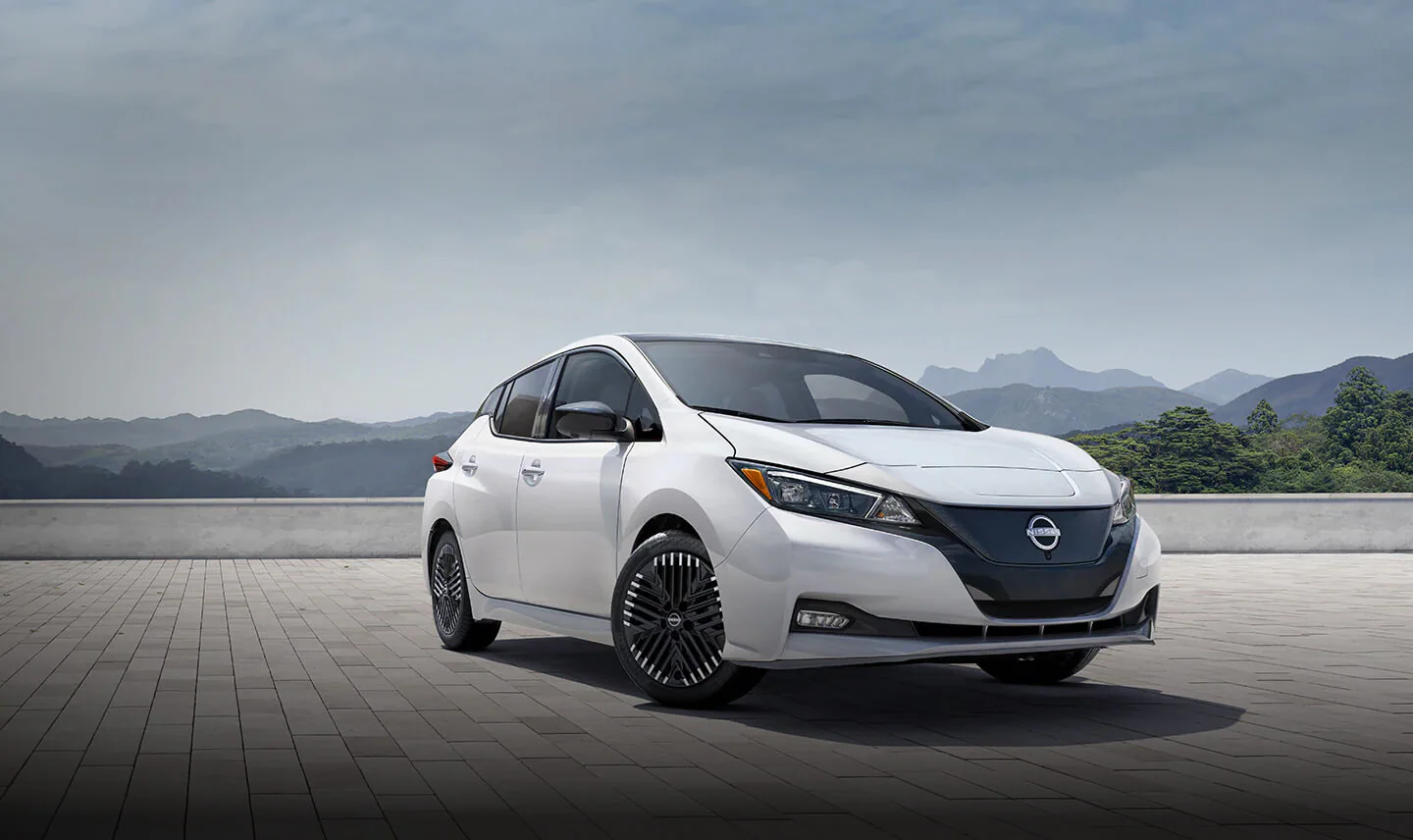
In terms of power, the standard Leaf produces 147 horsepower, while the Leaf Plus bumps that up to 214 horsepower yet it still lags behind even the Bolt EV in performance.
Charging speeds are decent but not exceptional. Interior quality is another downside, as the cabin features a significant amount of hard plastic.
While the cargo space is generous, that alone isn’t enough to justify the cost. If you’re planning to invest around $30,000 in an electric car, there are definitely more compelling choices than the Nissan Leaf.
2019 Fiat 500e
Offering one of the poorest driving ranges in its class, the 2019 Fiat 500e manages just 84 miles on a full charge. If that isn’t enough of a red flag, there are several more reasons to be cautious about this EV.
It’s powered by a small 25 kWh battery pack and an electric motor that produces only 115 horsepower.The interior design is awkward, and taller drivers may find it uncomfortable to sit in. In addition, cargo space is extremely limited.
While the Fiat 500e does offer some driver assistance features, the selection is quite limited. Despite lacking speed, features, and practicality, the Fiat 500e carries a price tag north of $30,000 which feels highly unreasonable for what it delivers.
The 2019 FIAT 500 delivers easy maneuverability and a simple, user-friendly infotainment system, which makes it a decent option for city commuting. However, its extremely low predicted reliability rating, along with a cramped and low-quality interior, drags it to the lower ranks of the subcompact car segment.
The small footprint of the FIAT 500 allows for stress-free navigation through dense urban areas and effortless parking in tight spots. For those looking for extra performance, the Abarth trim adds a more robust engine and features like a sport-tuned suspension, enhancing driving excitement.
Despite these positives, the car’s shortcomings are hard to overlook. The cabin feels cheap, with widespread use of hard plastics and low-rent materials.
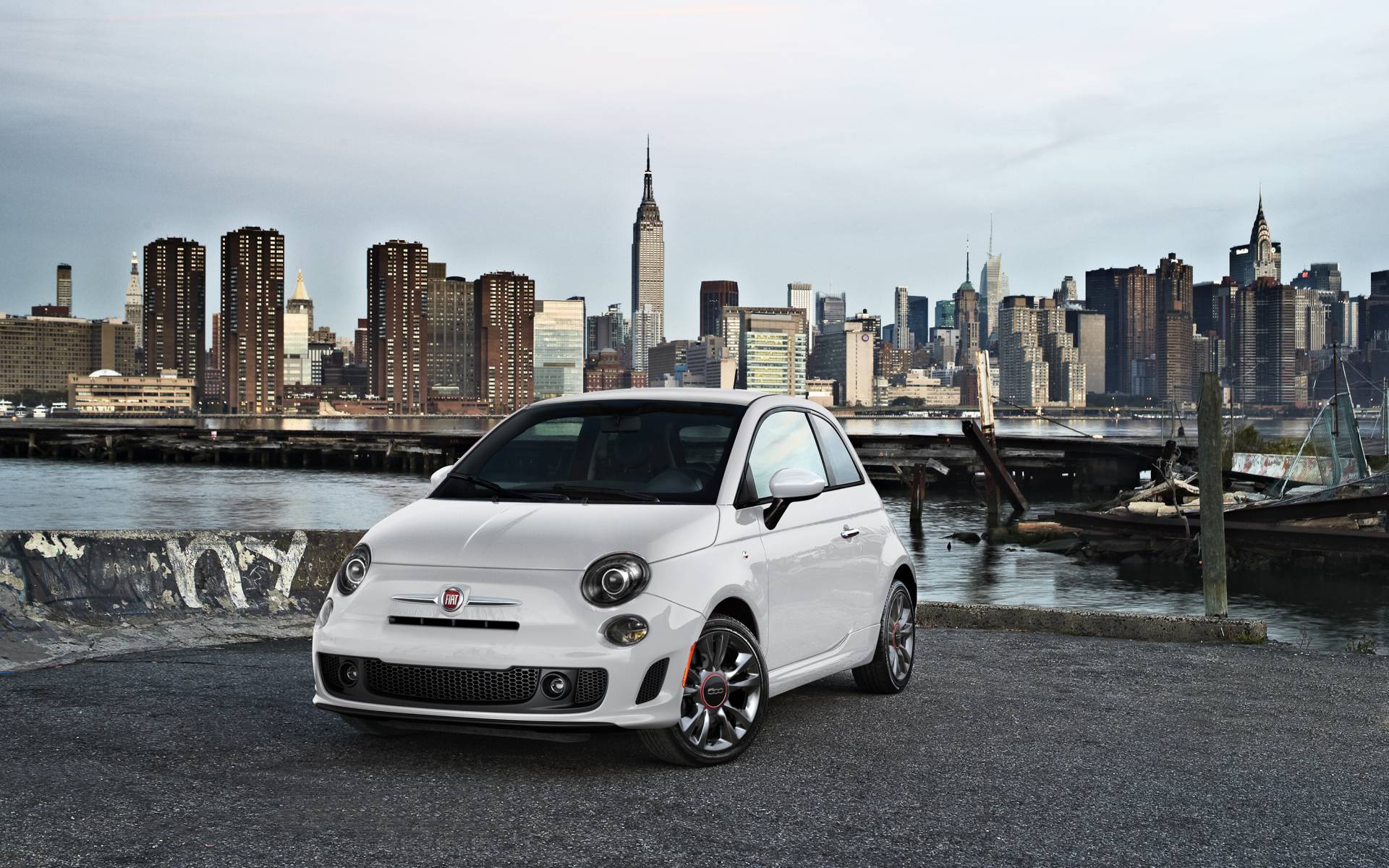
Space is also a major concern, as the interior is one of the smallest in its class. Additionally, the base engine struggles to deliver power on highways, which further limits its versatility outside urban environments. These downsides, paired with the car’s dismal predicted reliability, place it far behind competitors in the same price range.
For 2019, there were no significant updates to the FIAT 500. In fact, the model is nearly identical to the 2018 version.
It’s worth noting that 2019 marked the final production year for both the FIAT 500 and the 500e in North America. The vehicle seats four passengers, offers front-wheel drive, and produces between 111 and 160 horsepower, depending on the trim. Fuel economy ranges from 24 to 28 mpg in the city and 32 to 33 mpg on the highway.
When stacked against its rivals, the FIAT 500 underperforms. The 2019 Honda Fit, for example, averages a price paid between $14,328 and $17,394 and ranks significantly higher.
Other key competitors include the Chevrolet Sonic and MINI Cooper (both tied at #2), the Hyundai Accent, and the Kia Rio. In contrast, the average price paid for the 2019 FIAT 500 ranges from $11,342 to $18,869—meaning it isn’t necessarily the cheapest option despite its lower rankings.
Photos of the 2019 FIAT 500 highlight its distinctive, compact styling. Exterior images include shots of the angular front and rear, the side profile, and various interior details like the dashboard and rear seating. Altogether, over 500 photos are available to provide potential buyers a thorough visual overview.
Currently, there are no projected five-year ownership costs available for the 2019 FIAT 500, including fuel, insurance, taxes, maintenance, or repairs.
And as mentioned earlier, since the 2019 model carries over from 2018 without significant changes, buyers should be aware that it was the last year this car was sold new in North America.
BMW i3
Arguably one of BMW’s least successful electric vehicles, the BMW i3 originally came with a steep price tag approaching $50,000 and struggled to live up to expectations.
It was equipped with a 42.2 kWh battery pack, providing a range of 153 miles per charge. Buyers also had the option of a gasoline-powered range extender.
However, for the kind of money BMW was asking, buyers deserved far better range especially when competitors like the Tesla Model 3 were offering up to 350 miles on a single charge.
While the i3’s interior design was modern and unique, it wasn’t particularly spacious, and the lack of Android compatibility in its infotainment system was a notable omission.
All things considered, the BMW i3 didn’t justify its premium price and is still not a great buy even on the used market.

The BMW i3 is a strong contender if you’re in the market for an electric vehicle that excels in city driving and features a chic, upscale interior. However, much like choosing an iPad over a generic Android tablet, the i3’s sleek design and premium quality come at a higher price compared to more conventional electric alternatives.
Inside the i3, you’ll find BMW’s excellent iDrive system, complete with a crisp, high-resolution 10-inch infotainment screen and built-in satellite navigation as standard.
Unfortunately, not all of the luxury touches come included. Elements like the wooden dashboard accents and partial leather upholstery are only offered through BMW’s optional interior packages: Loft, Lodge, and Suite.
Even without these upgrades, the cabin maintains a high-end feel. There’s ample room up front, and taller drivers – even those over six feet – should find it easy to get comfortable.
The rear, however, isn’t quite as spacious. While the legroom is modest, it’s still sufficient for children to stretch out, and the rear-hinged back doors make it simple to load in a bulky child seat. Additionally, the uniquely shaped rear windows contribute to a bright and airy feel in the back seats.
Still, the i3 has its limitations. It strictly seats four, and the cargo space in the boot is fairly limited. This makes the Renault Zoe and Nissan Leaf better choices when practicality is a priority.
As standard, the BMW i3 comes equipped with a compact battery and a small electric motor that powers the rear wheels. BMW claims a driving range of up to 188 miles on a single charge, but in real-world conditions, the i3 is more likely to achieve around 160 miles between charges.
Mini Cooper SE
If your top priority is owning a vehicle with charming looks, the Mini Cooper SE might seem appealing at first glance.
However, it’s best suited for drivers who don’t plan to cover a lot of miles. With a driving range of just 110 miles on a full charge, this EV isn’t built for extended trips.
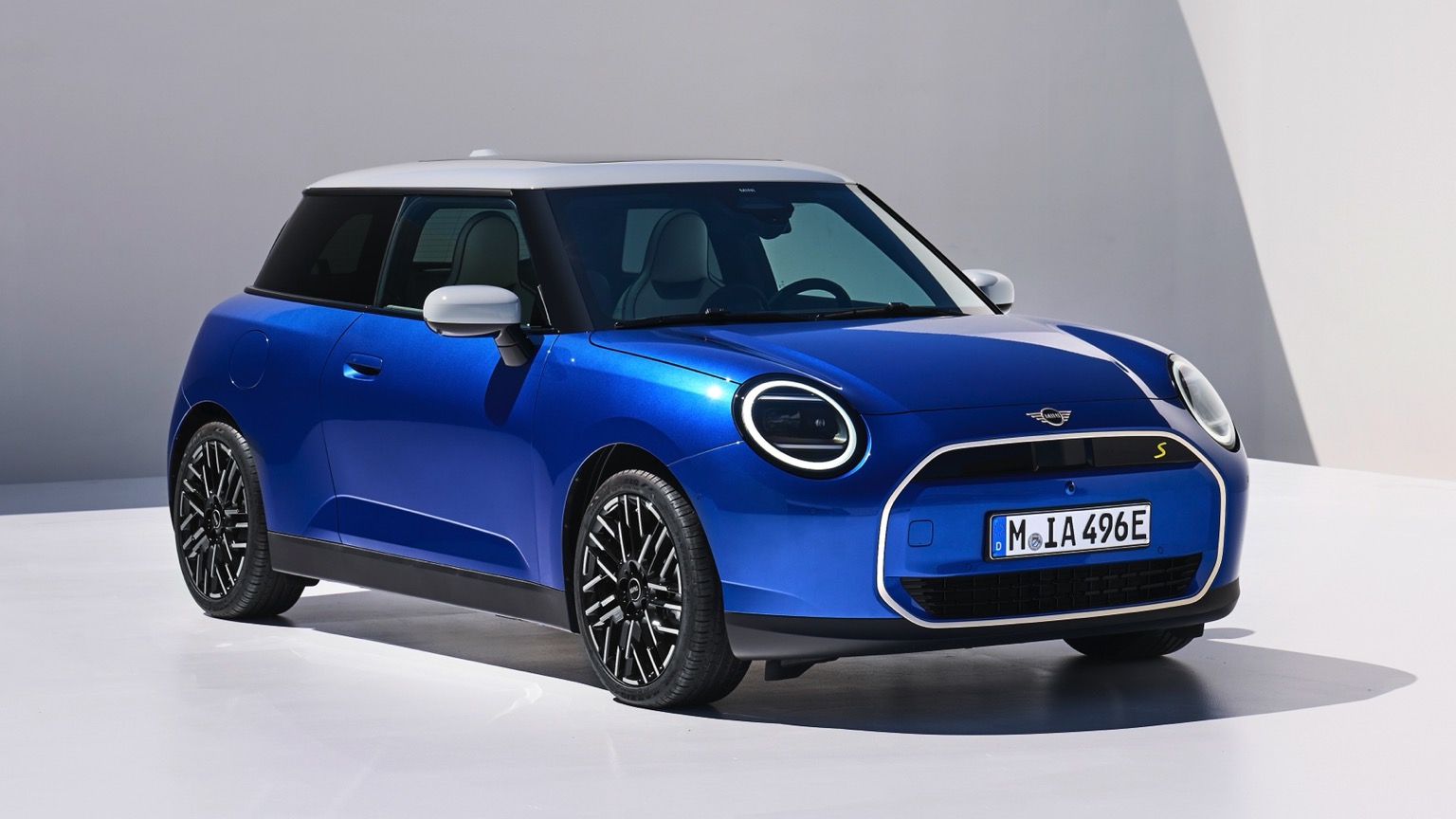
The base model starts at $30,750 and climbs to $37,750 depending on the trim. It features a 32.6 kWh battery pack only 28.9 kWh of which is usable powering a motor that delivers a respectable 181 horsepower.
True to its name, the “Mini” doesn’t offer much in the way of cargo space, and the rear seating area is also limited. While it may win style points, the Mini Cooper SE lacks the practicality needed to justify its price for most buyers.

